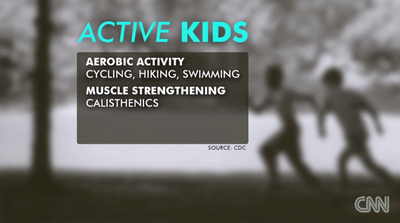Seminar Papers

Illustration: Jose-Luis Olivares/MIT (ferritin illustrations courtesy of Wikimedia)
MIT engineers designed protein ‘Ferritin’, which has weakly magnetic characteristic. It could be used for tracking cells or monitoring interactions of cells. It is in developing step, because it is not easy to deliver this particles to specific cell. However, from this study, using the cells with ‘Ferritin’, researchers are able to track some activity with MRI.
If you’re interested with this article, click the following link:
http://news.mit.edu/2015/engineers-design-nanoparticles-magnetic-cell-sensors-1102

Scott Camazine-Getty Images
The author of Harvard Business Review article, Kabir Sehgal, told us how the money affect to the brain. fMRI was used in the experiments, which presented in the article. There are several different studies in the article, and in this news, they mentioned three key results from different experiments. In short summary, the activity area of brain are depends on the task, which concerning money, and some of it could influence person’s physical symptoms. The results are, 1) When one’s money is at risk, stomach pain could occur. 2) Activated area of brain is similar as cocaine addicts. 3) The activities of brain area are shown in different parts in case of risky decision and safe decision.
If you’re interested with this article, click the following link:

(Image: MIT News)
MIT neuroscientists offered evidence that the inferior temporal (IT) cortex could distinguish objects. They used the data from both humans and primates, and found activation in the neurons of IT cortex, when subject recognizing some objects. Also they compared IT area with V4 area, and found that the neurons on each area activates in some objects but not others. Therefore the researcher said we could predict the flow of recognizing image, from the retina through V1, V2, V4 also in IT.
If you’re interested with this article, click the following link:

Once, we think that attention deficit hyperactivity disorder (A.D.H.D.) mainly shown from children and young adult. However, this write shows that we could find A.D.H.D. from elder people. Also, when elder has ADHD, the disease could confused with Alzheimer’s disease, which regarding old age.
If you’re interested with this article, click the following link:
http://well.blogs.nytimes.com/2015/09/28/is-it-alzheimers-or-a-d-h-d/

Researchers from the Defense Advanced Research Projects Agency (DARPA) studied regarding a prosthetic hands. They implanted an electrode array into both motor cortex and sensory cortex. The brain region of sensory cortex recognizes tactile sensations. Those connected wires from motor cortex control the hand. The researchers also show it might be able to communicate sense of touch to the user.
If you’re interested with this article, click the following link:
http://edition.cnn.com/2015/09/15/health/prosthetic-hand-senses-touch/index.html

(captured from CNN news images)
We could often hear that exercising is good for physical health, and some intellectual capacity. The study shows the correlation between physically and mentally in children. Researchers used MRI to scan the brain. The MRI results from the child who had an ability in running on the treadmill for a long period of time showed less section of the gray matter in the front area.
If you’re interested with this article, click the following link:
http://edition.cnn.com/2015/08/31/health/fit-kids-better-math/index.html

There’s been an argument on how to categorize the gender of human being and recent neuroscience research suggests that
gender identity may exist on a spectrum and that gender dysphoria fits well within the range of human biological variation.
If you’re interested with this article, click the following link:
http://www.nytimes.com/2015/08/23/opinion/sunday/richard-a-friedman-how-changeable-is-gender.html
Team from Washington University School of Medicine and the University of Illinois was able to plant a device to several mice with a brain damage. They were able to control them with a remote control of the device.
If you’re interested with this article, click the following link:
http://www.nytimes.com/reuters/2015/07/24/technology/24reuters-usa-wireless-mouse-brain.html?_r=0

The project, which coordinated by the Physikalisch-Technische Bundesanstalt (PTB) and which is one part of the project European Metrology Research Programme (EMRP), researched about whether people are affected by inaudible sound or not. Using magnetoencephalography (MEG) and functional magnetic resonance imaging (fMRI), the researchers could find that some area of the brain activates when infra/ultrasound is heard (above image). People can think that they couldn’t hear infra/ultrasound. However from the result of the research, we could find that those inaudible sound can affect people.
If you interested in, please click the following link.
Electrophysiological recordings in the medial temporal lobe could identify the changes of the memory formulation in the corresponding brain regions. For examples, “Clint Eastwood” neurons/cell in this regions are also firing for the same person with different backgrounds (which is a new memory formation).

http://www.nytimes.com/2015/07/07/science/scientists-see-neurons-change-as-memories-form.html